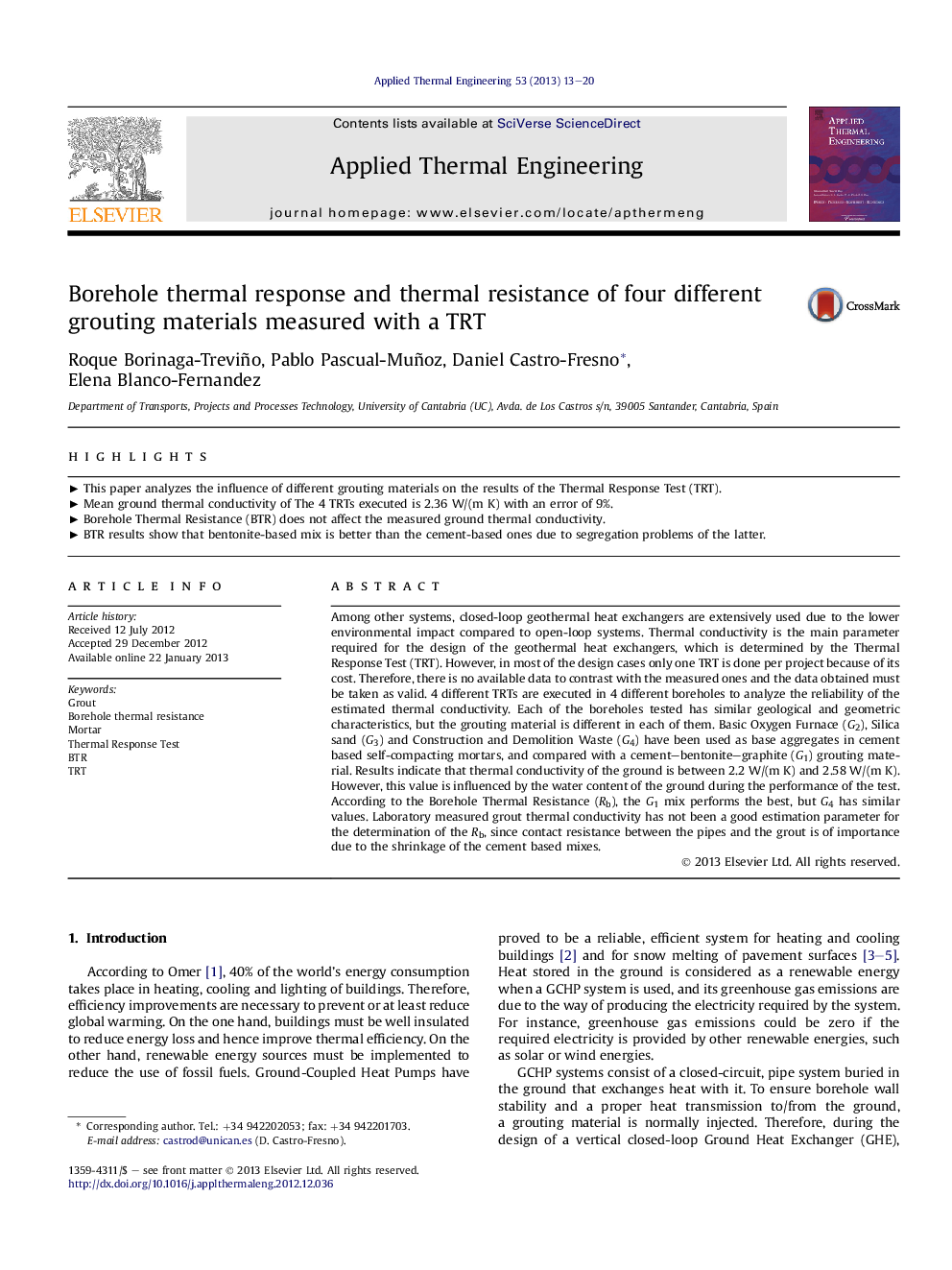| Article ID | Journal | Published Year | Pages | File Type |
|---|---|---|---|---|
| 646917 | Applied Thermal Engineering | 2013 | 8 Pages |
Among other systems, closed-loop geothermal heat exchangers are extensively used due to the lower environmental impact compared to open-loop systems. Thermal conductivity is the main parameter required for the design of the geothermal heat exchangers, which is determined by the Thermal Response Test (TRT). However, in most of the design cases only one TRT is done per project because of its cost. Therefore, there is no available data to contrast with the measured ones and the data obtained must be taken as valid. 4 different TRTs are executed in 4 different boreholes to analyze the reliability of the estimated thermal conductivity. Each of the boreholes tested has similar geological and geometric characteristics, but the grouting material is different in each of them. Basic Oxygen Furnace (G2), Silica sand (G3) and Construction and Demolition Waste (G4) have been used as base aggregates in cement based self-compacting mortars, and compared with a cement–bentonite–graphite (G1) grouting material. Results indicate that thermal conductivity of the ground is between 2.2 W/(m K) and 2.58 W/(m K). However, this value is influenced by the water content of the ground during the performance of the test. According to the Borehole Thermal Resistance (Rb), the G1 mix performs the best, but G4 has similar values. Laboratory measured grout thermal conductivity has not been a good estimation parameter for the determination of the Rb, since contact resistance between the pipes and the grout is of importance due to the shrinkage of the cement based mixes.
► This paper analyzes the influence of different grouting materials on the results of the Thermal Response Test (TRT). ► Mean ground thermal conductivity of The 4 TRTs executed is 2.36 W/(m K) with an error of 9%. ► Borehole Thermal Resistance (BTR) does not affect the measured ground thermal conductivity. ► BTR results show that bentonite-based mix is better than the cement-based ones due to segregation problems of the latter.
